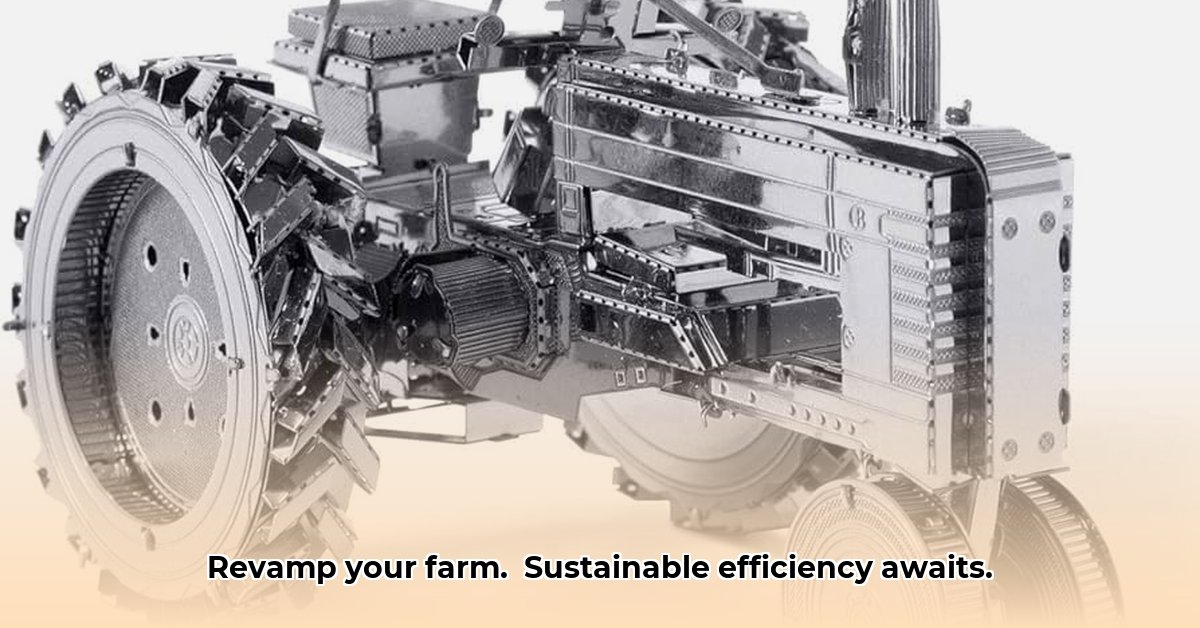
Tractor Metal: Building a Greener Future for Farming
The agricultural landscape is evolving, with a growing emphasis on sustainable practices. Amidst this shift, metal panels are emerging as a significant player in farm infrastructure and equipment. Their robust nature and potential for longevity offer enticing advantages, but a balanced assessment is crucial. This article delves into the pros and cons of utilizing metal panels in sustainable agriculture, providing farmers, suppliers, and policymakers with the information needed to make informed decisions. For additional tractor attachments, check out these options.
The Upsides and Downsides of Using Metal in Farming
Metal panels boast considerable strengths. Their exceptional durability allows them to withstand harsh weather conditions (intense sun, freezing rain), minimizing the need for frequent replacements. This translates to reduced waste and long-term cost savings. Lower maintenance requirements save time and resources. Furthermore, their versatility adapts to a wide range of farm building and equipment designs. Their extended lifespan (significantly longer than wood or plastic alternatives) contributes to overall sustainability.
However, challenges exist. The initial investment for metal panels is typically higher than for wood or plastic. The manufacturing process, from raw material extraction (mining) to fabrication, consumes substantial energy and resources, potentially leading to significant greenhouse gas emissions. Rust and corrosion are ongoing concerns affecting long-term durability. Ultimately, responsible disposal and recycling are critical, presenting logistical and cost considerations. Finally, the full environmental impact, particularly the “embodied carbon” (the carbon emitted throughout the material's lifecycle), remains under ongoing research.
Isn't it important to understand the complete picture before making substantial investments in farm infrastructure? The data shows a clear trade-off between upfront costs and long-term savings.
A Metal Panel’s Journey: From Mine to Recycling Bin
To fully grasp the environmental impact, let's trace a metal panel's journey. It begins as ore extracted from a mine, a process that can disrupt habitats and potentially pollute water sources. Subsequent processing, transportation to factories, and manufacturing all consume energy and generate emissions. Finally, the panel reaches the farm, serving its purpose for years. Ideally, responsible recycling at the end of its life minimizes waste and reduces demand for new materials. This lifecycle underscores the need for sustainable sourcing and manufacturing practices.
Beyond the Panel: A Holistic Approach to Sustainable Farming
Sustainable agriculture demands a comprehensive approach. We must consider the entire lifecycle of metal panels: responsible sourcing of raw materials to minimize mining's environmental impact, efficient manufacturing to reduce energy consumption, and effective recycling to mitigate waste. This joint responsibility rests with farmers, manufacturers, and policymakers.
Making Informed Choices: Farmers, Suppliers, and Policymakers Unite
Farmers benefit from long-term perspectives. While initial costs might be higher, the reduced maintenance and extended lifespan of metal panels often result in significant cost savings over time. Suppliers play a crucial role by providing comprehensive data on their products' environmental impacts, with full lifecycle assessments being particularly valuable. Policymakers can facilitate sustainable practices through incentives (grants for sustainable farming practices) and regulations (stricter waste disposal standards).
The Future of Tractor Metal and Sustainable Agriculture
The demand for efficient and sustainable agriculture is pressing. Metal panels offer durable, long-lasting options, but responsible use is paramount. Ongoing research focusing on reducing the environmental impact of metal production and improving recycling methods is critical for determining their role in a sustainable agricultural future. Collaboration among farmers, manufacturers, and policymakers is essential to ensure that the unique benefits of metal panels serve future generations.
How to Compare Lifecycle Costs of Metal vs Wood Panels for Sustainable Farm Buildings
Key Takeaways:
- Metal panels offer superior durability and longevity, reducing long-term maintenance.
- Wood panels may have lower upfront costs but higher maintenance expenses over time.
- Construction speed favors metal, impacting project timelines and labor costs.
- Environmental impact varies depending on sourcing and production for both materials.
- Comparing lifecycle costs requires considering initial costs, installation, maintenance, lifespan, and disposal/recycling.
Initial Costs: Weighing the Upfront Investment
The initial investment is a primary factor. Wood often appears cheaper upfront, but metal's longevity reduces long-term expenses. Detailed cost estimates from multiple contractors are essential for informed decision-making.
Long-Term Maintenance: The Ongoing Costs
Long-term maintenance must be factored in. Wood requires regular painting, pest control, and repairs from potential rot or damage. Metal requires less maintenance but might need occasional repainting or corrosion treatment. Regular inspections minimize long-term repair expenses.
Construction Time: Speed vs. Tradition
Metal buildings offer faster construction times, reducing labor costs and accelerating occupancy. While wood offers a traditional aesthetic, the time savings with metal are substantial.
Environmental Considerations: Sustainability in Action
Both materials have environmental footprints. Steel production has a substantial carbon footprint, but recycled steel greatly reduces this. Wood's sustainability relies on responsible forestry practices. Analyzing the complete material lifecycle is crucial.
A Practical Example
Compare two identical barns: one wood, one metal. The wood barn might initially cost less, but over 20 years, maintenance for the wood barn (painting, repairs, pest control) will likely exceed the minimal maintenance for the metal barn. This illustrates the importance of total cost of ownership.
Making the Right Choice
Choosing between metal and wood involves considering long-term implications, environmental footprint, and overall efficiency. Analyze all factors carefully to ensure the best choice for your needs and long-term sustainability goals. Informed decisions lead to efficient and profitable farming.